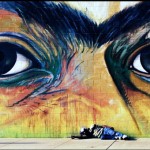 InCytes, a public healthcare e-magazine has awarded author and Humane Exposures founder Susan Madden Lankford its 2016 Spotlight Award.
InCytes, a public healthcare e-magazine has awarded author and Humane Exposures founder Susan Madden Lankford its 2016 Spotlight Award.
It wrote:
In the early 1990s, Susan Madden Lankford began photographing—and befriending—the homeless on the streets of downtown San Diego. Compelled to learn more, she gained access to a women’s detention center and soon was shooting within its walls, speaking with candor with inmates and staff. Next, pursuing the link between crime and childhood neglect, she met with young people in juvenile hall, challenging them to face their hopes and fears through artwork and the written word.
Lankford’s award-winning books on homelessness, incarceration, and juvenile justice are testament to many years of commitment to complex social issues. Her venture in the realm of documentary film continues this work.
Susan Lankford grew up in the Midwest and holds a BS degree from the University of Nebraska. She attended Ansel Adams’ prestigious workshops, studied under such photographic masters as Richard Misrach and Ruth Bernhard, and spent many years as a successful wildlife photographer and portraitist. The parents of three adult daughters, Susan and Rob Lankford live in San Diego.
.The magazine asked Lankford the most rewarding aspects of her work:
My work includes three books of photojournalism, a documentary film, and a small nonprofit, all focused on the interlinking social issues of homelessness, incarceration, juvenile justice, and child development.
On a national level, I find it very gratifying to see the dialogue changing on the subject of criminal justice—a recognition that we must address the causes of crime, and not just focus on punishment. My documentary It’s More Expensive to Do Nothing is currently used by the FBI in their training. College educators use the books of Humane Exposures as well as the film in their classes, which pleases me deeply.
On a local level, there’s nothing more rewarding than learning that an individual I met on the streets or in women’s detention is now clean, employed, and living a healthier life.
On a personal level, I’ve learned so much from the interesting and often challenging individuals I’ve met, interviewed, and come to know in the course of each project. Phone calls, emails, and Facebook messages from so many on a new path are all particularly rewarding.
Lankford was then asked the most challenging aspect of her work?
One of the biggest challenges I faced when working with the homeless and with incarcerated women and juveniles was gaining their trust, dealing with the suspicions and manipulations of my interview subjects as they came to understand the purpose of my work. Particularly difficult was bearing witness to the trauma so many of the juveniles have experienced in their short lives.
Dealing with red tape and regulations was challenging as well, gaining access to prisoners, negotiating with staff. I was even required to take a self-defense class before entering juvenile hall.
After the solitary creative process of photography and photojournalism, documentary filmmaking brought a new set of challenges—collaborating with a director, cameraman, and other film professionals while maintaining the message I wanted to deliver.
But in all cases the rewards outweigh the challenges.
Finally she was asked what message she has for her readers?
The greatest lesson I have learned in my work is that crucial social issues cycle through generations. If we don’t address the trauma and neglect experienced by so many of our young people, before long we will see them on our streets, in our hospitals, and enmeshed in our criminal justice system. These issues aren’t just social issues—they’re economic issues. The economic burden on society is lessened when we examine the lives of society’s disenfranchised with compassion and common sense, then take the necessary steps to effect change.
My current focus is on underserved youth, primarily through my nonprofit Humane Smarts and our urban garden SMARTS Farm. Here, young people can dig in dirt, learn about bugs, express themselves through photography, and grow, harvest, prepare, and enjoy healthy food, all while interacting with community gardeners and compassionate educators.









